Virile Desires? Scenes of ‘unnatural’ sex in Rajasthani paintings

The above image (Fig.1) seems to be a preparatory or practice drawing/sketch in which women are depicted sprawling their legs for a wild boar, monkey, black-buck, and a man for copulation. From erotic scenes adorning temple walls to “ass-cursed” stones (gadhegal) depicting a woman being penetrated by a donkey and beyond[ii], the expansive range of artworks depicting sexual activities give a glimpse into South Asia’s complex past, which has much to offer when we think of sex and sexuality. Likewise, Fig.1 makes us wonder: why was it created? Who was the spectator? In an attempt to understand these “unnatural” scenes, this essay offers a preliminary inquiry of this complex subject which remains understudied.[iii] The examples used here belong to the region of Kota and a brief overview of its artistic traditions and histories shall help us to understand the context of their production.
Fig.1: Erotic Vignettes of Intercourse of Women with Animals and a Man, circa 19th century, Kota, Rajasthan, India. Collection: Harvard Art Museums. Link: https://www.harvardartmuseums.org/collections/object/217581?position=3
Enveloped now within the state of Rajasthan in northern India, Kota, in 1631 CE was an independent princely state established by Rao Madho Singh (r. 1631-48).[iv] Painting as an activity at Kota arguably began as early as the 1650s. By the 18th century, Kota was one of the major centers of court paintings with accomplished artists executing a variety of subjects – sensitively rendered flora and fauna (most notably elephants), ecstatic hunt scenes and a wide range of surviving preparatory/practice drawings, all of it giving a glimpse into the artists’ psyche and lives.[v] Erotic scenes were a conventional theme among court painters. Kota painters never failed to convey the passion through their “undulating line[s]” as seen in Fig.2.[vi]
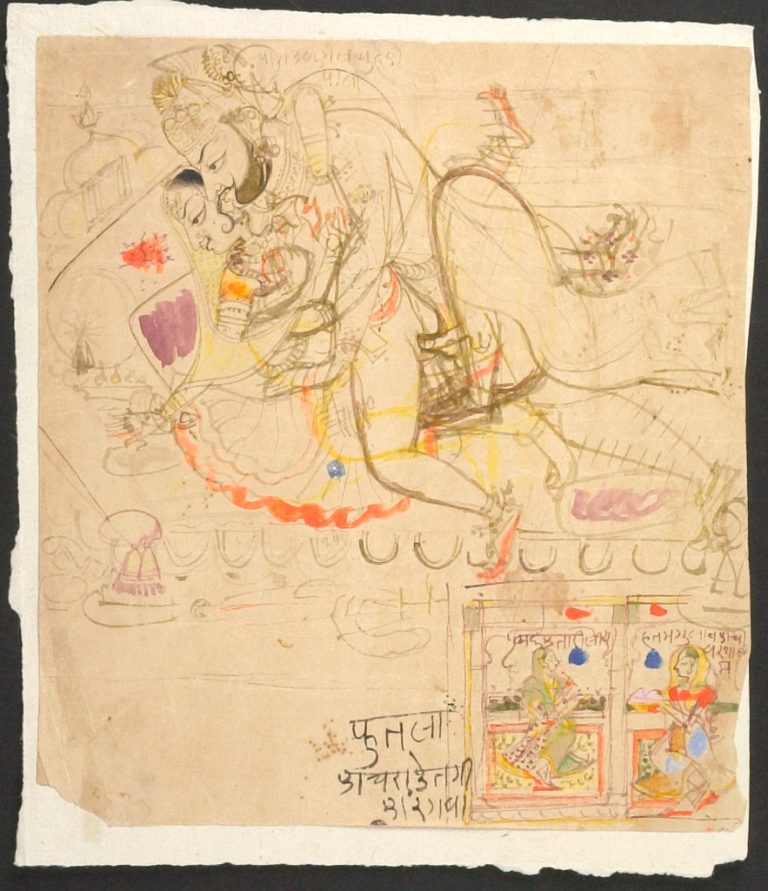
Fig.2: An amorous couple and two women, 19th century, Kota, Rajasthan, India. Collection: Harvard Art Museums.
Link:https://www.harvardartmuseums.org/collections/object/217615?position=41

Fig.3: The great orgy of Maharao Shatru Sal II, mid-19th century, Kota, Rajasthan, India. Collection: Harvard Art Museums. Link: https://www.harvardartmuseums.org/collections/object/310594?position=0
A better picture is available on Flickr: https://www.flickr.com/photos/heleenmeijer/41975279091/
Almost an expansion of Fig.1, the above scene is set against a dark dramatic gloomy sky with curling clouds, crowded with figures. Through the lush green mountain and the marbled palace-like structure, the painter distinctly splits the scene into two. Only a close inspection of the painting unravels this ‘potpourri’ – the upper part depicts a variety of animals and birds in copulation; parakeets, ducks, goats, tigers, wild buffaloes, camels, bull-cow, deer, sloth bears, dogs, horses, wild boars, nilgais, and even elephants. Slowly as our eyes move down, few male-animals and men are seen copulating with women in a variety of positions and “oblong pillows and small cups strategically placed to collect body fluids are scattered all over the lower half of the painting”[vii]. While some women seem to ‘worship’ the enormous penises of three bearded figures who could probably be ash-smeared saints, one in the lower right even performs fellatio on him.[viii] Amidst all this, on the lower right, a woman is giving birth to a child. So what do we make of all this?
I suggest, looking beyond this painting may guide us further. Broadly, in many Hindu traditions, kama (desire or sexual love) is one of the four important aspects of life[ix], and especially for kings, kama was their rajadharma (king’s obligation).[x] Among the texts on “eroticism”, Kamasutra (in Sanskrit; arguably circa 3rd century CE[xi]) of Vatsyayana is perhaps the best-known and may give us some clues regarding this scene.[xii] The classification of “hero” (nayaka) and “heroine” (nayika) in Kamasutra, encompasses a chapter on sexual typology divides men into hares, bulls and horses and women into deer, mares and she-elephants.[xiii] Bulls and horses are signifiers of virility and power. If read carefully along with the text, some sexual positions reveal similarities with the painting. For e.g. “a ‘doe’ positions herself in such a way as to stretch herself open inside”.[xiv] And “…When both thighs of the woman are raised, it is called the ‘curve’. When the man holds her legs up, it is the ‘yawn’…”[xv] (see Fig. 3.1, with numbers marked). This is not to suggest that Kamasutra is the direct source of this painting, but we should not be surprised to find the painting’s roots in this as many Hindu/Rajput rulers “reached back” to these texts (other examples include Rasikapriya, Gita Govinda, Ramayana among others) and were “deeply inflected” by early South Asian aesthetic and visual traditions, as Molly Emma Aitken discusses.[xvi]
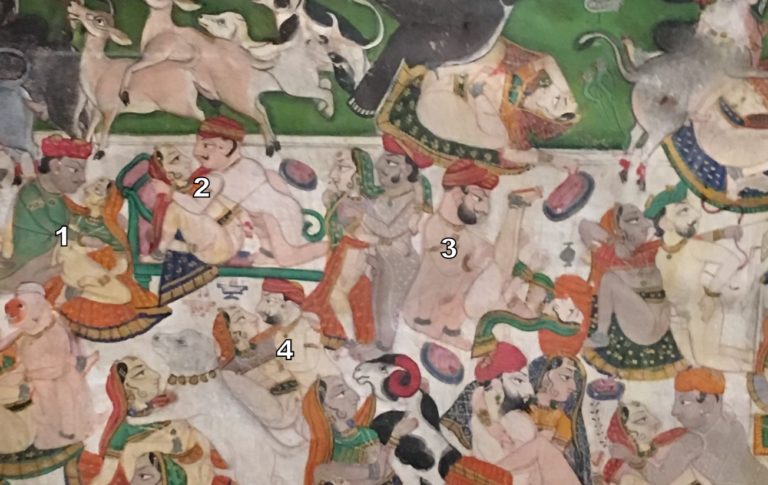
Fig.3.1: Detail from Fig.3.
Before we conclude, let us return to the painting. The scene almost camouflages an important figure on the left just above the blue figure. He is none other than the then ruler Maharao Shatru Sal II of Kota (r. 1866-89), who appears to be the most virile and powerful man among all in the scene (Fig.3.2). Another similar partly damaged scene depicts Shatru Sal II’s father Ram Singh (Fig.4).

Fig.3.2: Detail from Fig.3
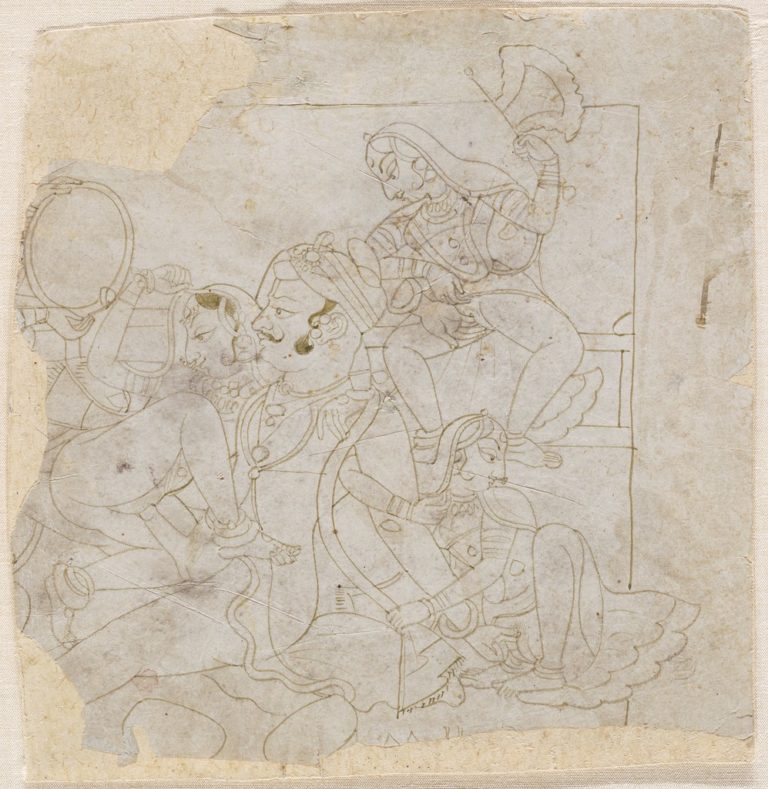
Fig.4: A Royal Figure and Several Courtesans Engaged in Amorous Activities, circa 1840 CE, Kota, Rajasthan, India. Collection: Harvard Art Museums.
Link: https://www.harvardartmuseums.org/art/217612
This not only confirms his prime position as an “ideal lover”, pleasing five women at the same time (something which no other figure is doing in this scene) but also his courtly masculinity and supremacy. Paintings were a powerful mode to convey such messages. In her seminal essay, Kavita Singh has argued how a Mughal painting of Muhammad Shah ‘Rangeela’ (r. 1719-48) might have served as a visual device to flaunt his lost virility after his “motor reflexes deteriorated at an early age, affecting his control over his lower body.”[xvii] Similarly, from circa 1877 CE, Maharao Shatru Sal II fell “quite ill and never really recovered”.[xviii] Could this be his way of expressing his sexual power? Besides, the continuity of the composition from father to son emphasizes their clan’s virility and legitimacy. Another comparison of the lowest part of the scene with an 18th century “gang-rape” scene from Mewar complicates this further.[xix] Molly Emma Aitken has published the below image (Fig.6) and a similar later version from Jodhpur. While examination of the entire scene (Fig.6) is beyond the scope of this essay, I agree with her interpretation, and offer a few thoughts – scenes depicting an “orgy” usually occur in an intimate setting of a palace or a terrace with a well-arranged bed/chamber including accoutrements to ignite passion and/or inclusion of signs of love like a pair of birds. With a rather dull background, this scene depicts a woman with legs sprawled while some men can barely wait for their turn; a figure in the lower right appears to be manscaping or performing circumcision or chopping off his own penis (perhaps a pun?) while others are violently fighting for their turn – this hints at the complexity which, I argue, goes beyond the conventional erotic or sexual scenes.
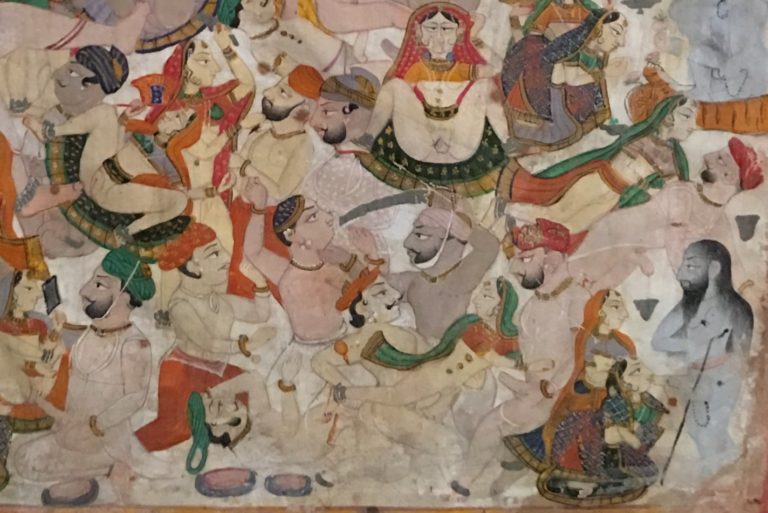
Fig.5: Detail from Fig.3
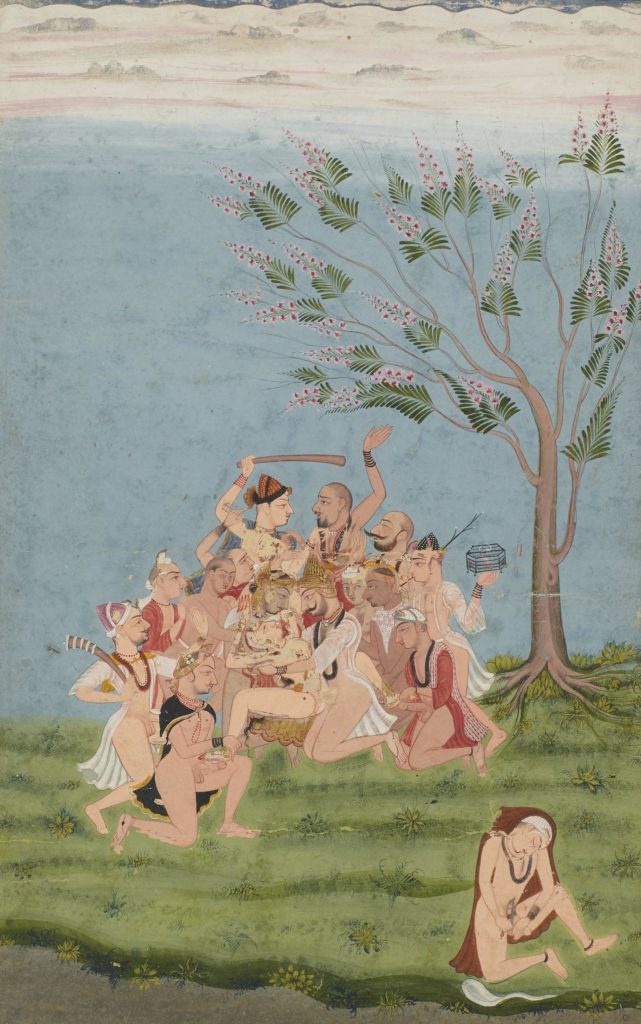
Fig.6: An Indian painting, circa 1740 CE, Mewar, Rajasthan, India. Source: https://www.uppsalaauktion.se/auktioner/?auction_name=20161206&catalog_nr=345
The practice of citing, quoting or copying of figure(s) and reusing compositions was common among artists, and following the explanation of Molly Emma Aitken , many of these compositions “were intended to create new meanings from their curious combinations….composite pages and marginal figures tended to invite the spectator to search for relationships among them and to create stories to justify their combination.”[xx] While it is possible that this quotation of “gang-rape” into this “orgy” was unintended or “lost in translation”, but “at the same time it seems likely that unintended connections were also a welcome part of the game of paratactic pictures”.[xxi] Does the inclusion of “gang-rape” hint on the horror of sexual acts?[xxii]
While the scene remains a mystery, any definitive answers at this point may result in a murky understanding of the layered world of South Asian painting. Instead, we would do well with meditating over why must we look at these?
Examining these “erotic fantasies” unravels the complexity of desires, especially in a pre-modern era. Not only these reveal how desires were understood in the courtly circles, it also gives a glimpse of how the artists envisioned it. I argue, here, the visual becomes a device to highlight masculinity and virility – one wonders if there is an exact textual source which is waiting to be discovered to further understand these complex paintings.[xxiii]
Acknowledgements:
This essay is an excerpt from my on-going research on sex and sexuality in pre-modern South Asian art. I am grateful to the Write|Art|Connect team for giving me this opportunity to pen down this essay and the editors for their feedback. I am indebted to Kavita Singh, Niharika Dinkar, David Gordon White, David Smith, Pronoy Chakraborty, Adira Thekkuveettil, Deepthi Murali and Aishani Gupta for their guidance. My selection and participation in the Likho Citizen Journalism Workshop (2018) aided me to look at gender more carefully – in particular, the guidance of Sonal Giani & Koninika Roy was helpful. Many conversations with Ruth Vanita have moulded my understanding of gender and sexuality in South Asia. This paper also owes much to the encouragement and feedback of Padma Shri Dr. Prakash Kothari (sexologist).
[i] This paper deals only with the scenes of ‘bestiality’ and ‘gang-rape’ in early modern South Asian painting. I have borrowed the term ‘unnatural’ from the modern legal lexicon of India. Trigger warning: Sexually explicit images.
[ii] For a general reading, see Dr. Alka Pande and Lance Dane, Indian Erotica (New Delhi: Roli Books, 2001). Also see Devangana Desai, Erotic Sculpture of India: A Socio-Cultural Study, 2nd ed. (New Delhi: Munshiram Manoharlal, 1985). On gadhegal, see K.F.Dalal, S. Kale and R. Poojari, 2015. Four Gadhegals Discovered in District Raigad, Maharashtra. Ancient Asia, 6, p.Art. 1. DOI: http://doi.org/10.5334/aa.12320. See Dr. Prakash Kothari, Erotica: The Art of Loving (Mumbai: VRP Publishers, 2010). An intriguing parallel of ‘unnatural’ sex scenes can also be found in Japanese Shunga. See Timothy Clark et al., eds., Shunga – Sex and Pleasure in Japanese Art (Leiden: Hotei Publishing, 2013).
[iii] It is also important to note that my examination is based only on the available photographs of the paintings from web sources.
[iv] Rao Madho Singh was one of the two sons of Rao Ratan Singh of Bundi. The rulers were from the Hada clan of Rajputs and bore the titles of Rao or Maharao.
[v] For a book-length study, see Stuart Cary Welch, ed., Gods, Kings, and Tigers:The Art of Kotah (Munich: Prestel, 1997). Also see the extensive scholarship of Joachim Bautze, Woodman Taylor and Milo Cleveland Beach.
[vi] Ibid., 20. Also see Natalia Di Pietrantonio, “Pornography and Indian Miniature Painting: The Case of Avadh, India,” Porn Studies 7, no. 1 (January 2, 2020): 36–60, https://doi.org/10.1080/23268743.2018.1532808.
[vii] Sunitha Das has examined this painting in a blog-article. She notes that the painting gestures towards Tantrism. My preliminary investigation has not yet given me any direct signs of Tantric rituals, but it is difficult to comment further before examining the in-person with clarity. However, David Gordon White has suggested to me that this scene has nothing to do with Tantra (email conversation, March 16, 2020).
See: https://www.harvardartmuseums.org/tour/women-in-south-asian-art/slide/10299
[viii] Again, there is no certainty about this and figures painted in light-blue may not necessarily be Shaivites but as they are also holding rudraksha mala which is especially seen among Shaivite figures, there is a possibility.
[ix] The other three being Dharma, Artha and Moksha. This varies in different sectarian traditions. See Catherine Benton, God of Desire – Tales of Kāmadeva in Sanskrit Story Literature (New York: State University of New York Press, 2006). A
[x] See Kavita Singh, ‘The Congress of Kings:Notes on a Painting of Muhammad Shah’. In Molly Aitken (ed.) A Magic World: New Visions of Indian Painting (In Tribute to Coomaraswamy) (Mumbai: Marg Publications, 2016). Also see Anna Jackson and Amin Jaffer, eds., Maharaja: The Splendour of India’s Royal Courts, V&A Publishing (London, 2009).
[xi] Dr. Prakash Kothari’s research dates the text to circa 351-375 CE.
[xii] While the term erotic or eroticism does not encompass the larger understanding of what these texts convey, it gives a basic understanding. Other notable texts include Rati Rahasya of Pandit Kokkaka, Ananga Ranga of Kalyanmalla. It is interesting to note that among all these, at least Kamasutra does not look at sex between human and animals in a positive light. An important read from a gender perspective, see Shalini Shah, Love, Eroticisim and Female Sexuality in Classical Sanskrit Literature: Seventh-Thirteenth Centuries (New Delhi: Manohar Publishers, 2009).
[xiii] See Daud Ali, Courtly Culture and Political Life in Early Medieval India (Cambridge: Cambridge University Press, 2006), 216; Vātsyāyana, Wendy Doniger, and Sudhir Kakar, Kamasutra (Oxford: Oxford University Press, 2002), 28-29. This is also repeated in Ananga Ranga.
[xiv] Doniger and Kakar, Kamasutra., 51.
[xv] Ibid., 54.
[xvi] See https://www.youtube.com/watch?v=D8fw_NmkSZc&t=776s
[xvii] See Kavita Singh, ‘The Congress of Kings:Notes on a Painting of Muhammad Shah’. In Molly Aitken (ed.) A Magic World: New Visions of Indian Painting (In Tribute to Coomaraswamy) (Mumbai: Marg Publications, 2016).
[xviii] Welch, Gods, Kings, and Tigers: The Art of Kotah., 56.
[xix] This and another version of a similar scene has been published in Molly Emma Aitken, The Intelligence of Tradition in Rajput Court Painting (New Haven: Yale University Press, 2010), 96. While she uses the two images to talk about how compositions are copied, her identification of both the scenes call it a “gang-rape scene”. Parallel scenes can be found in Japanese erotica (Shunga). See Kazutaka Higuchi and Alfred Haft. “No Laughing Matter: A Ghastly “Shunga” Illustration by Utagawa Toyokuni.” Japan Review, no. 26 (2013): 239-55. Accessed July 3, 2020. www.jstor.org/stable/41959826.
[xx] Molly Emma Aitken, “Parataxis and the Practice of Reuse, from Mughal Margins to Mīr Kalān Khān.” Archives of Asian Art 59, no. 1 (2009), 96.
[xxi] Ibid.
[xxii] Ibid., 99. Discussing a painting depicting intoxicated mystics and assorted subjects, she writes, “Tradition makes the divisions and their operations implicit. The viewer may be invited to wring from this spread of disparate scenes a meditation on intoxication: the intoxication of the lovers in the upper left, of the elephants in mast (intoxication) at the top, of the mystics on drugs, and of the victor in the hunt or in battle with his enemy.”
[xxiii] To add David Smith’s interesting take on this painting, “There can surely be no doubt that the painting was intended to have an aphrodisiac effect on its royal owner, to spur him on. The painting is certainly a representation of the universality of sexual love, where even asceticism denotes sexual power in a universe that is overwhelmingly sexual.” See David Smith, “Visual Representations of Aphrodisiacs in India from the 20th to the 10th Century CE,” in A World of Nourishment – Reflections on Food in Indian Culture, ed. Cinzia Pieruccini and Paolo M. Rossi (Milano: Ledizioni – LEDIpublishing, 2016).
About The Author
Based in Ahmedabad, Vinit Vyas works on early modern visual and material culture of South Asia, particularly court and devotional painting traditions. He graduated in Art History from the Dept. of Art History & Aesthetics, Faculty of Fine Arts, MSU Baroda in 2018. With an interdisciplinary approach, he also delves into religious studies, gender, sex and sexuality, languages, and text-image relationships. From 2015-2018, Vinit worked as a summer research intern at the Mehrangarh Fort Museum, Jodhpur, and has served as a visiting and guest faculty teaching South Asian art history at the National Institute of Design, Ahmedabad. He authored an introductory essay for the 2018 exhibition Luminously between Eternities and his other writings have appeared on The Heritage Lab, Sahagamana, and Virasat-E-Hind Foundation. Strengthening his research interests on Asian erotica, sexuality, and western Indian painting traditions, Vyas is co-authoring a catalogue on Rajasthani paintings and has also contributed a chapter in a forthcoming edited volume on the princely states of Gujarat.

